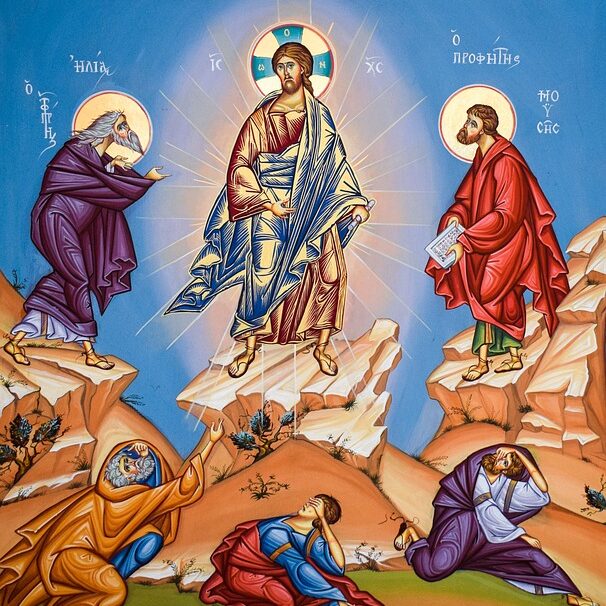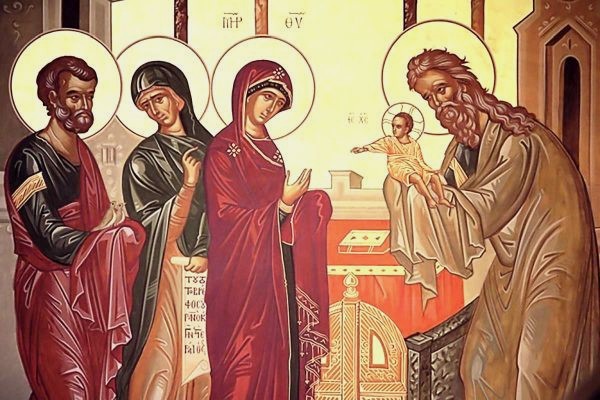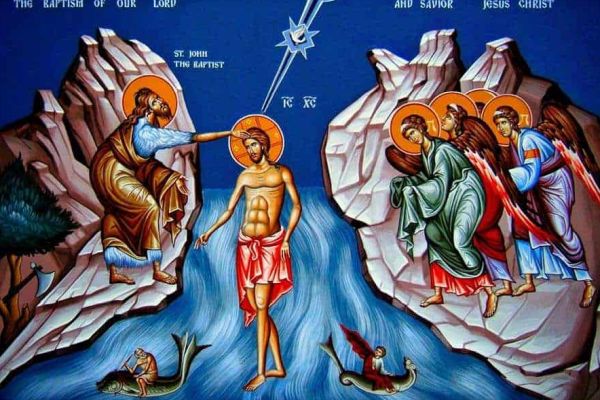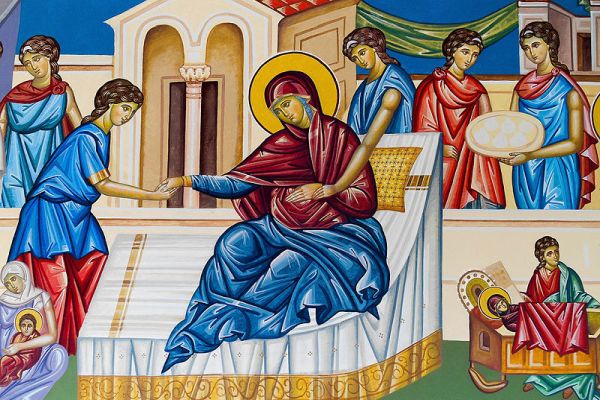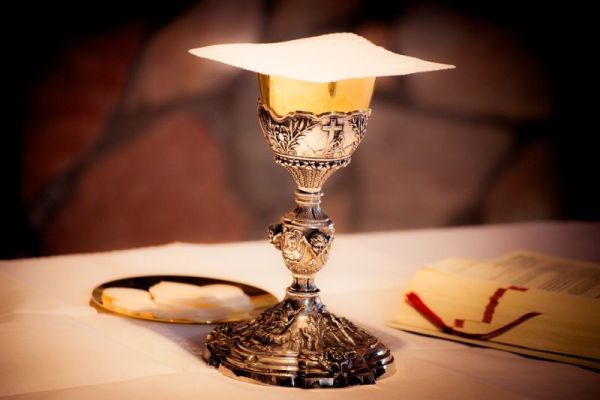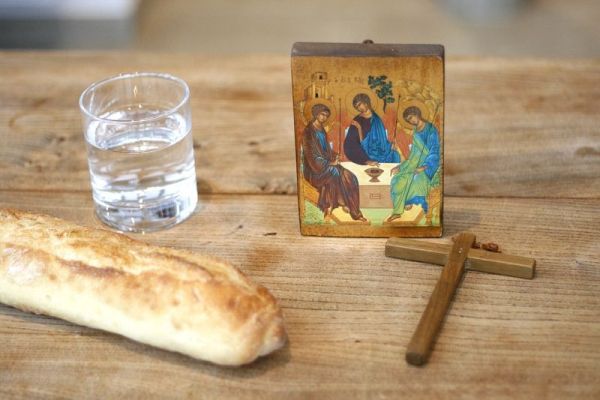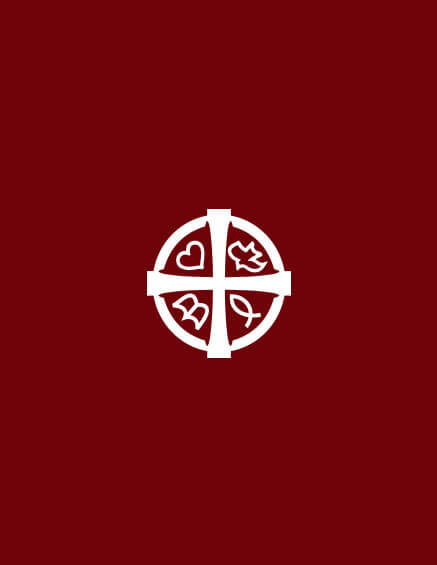The Feast of the
Transfiguration
The Feast of the Transfiguration is the commemoration of the miracle upon which our Lord Jesus Christ was transfigured1 for a brief time, revealing His divine glory to three of His disciples who were with Him at the time. This feast is one of the great 12 feasts of the Orthodox Church and is usually celebrated on August 62 every year3.
The Event
This event is so significant that it was recorded thrice in the Gospels (Matthew 17:1-13; Mark 9:2-13; Luke 9:28-36). These Scripture portions tell us that our Lord Jesus Christ took three of His disciples – St. Peter, St. James and St. John – up on a mountain top4 to pray. As our Lord was praying, and the disciples were feeling sleepy, suddenly the transfiguration occurred, during which the face and clothes of our Lord became dazzlingly bright. His face “shone like the sun” (Matt 17:2 NKJV) and His clothes became as white as light, so bright like snow “such as no launderer on earth could ever whiten” (Mark 9:3).
And as the disciples beheld this, their sleepiness all dissipated, two more incredible events occurred.
Appearance of Moses and Elijah – These two great prophets of the Old Testament appeared and were talking to the Lord Jesus about His impending death (Luke 9:31).
The Divine Voice from the cloud – On seeing Moses and Elijah, St. Peter said that they wanted to stay on the mountain and build three tabernacles for the Lord, Moses and Elijah. At that moment, a bright cloud overshadowed them and they heard God’s voice from the cloud, saying “This is my beloved Son; Hear Him!”
After the cloud dissipated, the disciples found everything was back to normal. The prophets had gone, and their Lord looked the same again. So as they returned from the mountain, the Lord Jesus commanded them not to speak of what they had seen until He had risen from the dead (Mark 9:9).
Significance of the Transfiguration
Event
1)Heaven’s Testimony to Christ’s divinity – The primary purpose of this event was to reveal the divine glory of God the Son to His disciples. When they saw Christ transfigured, the disciples understood His divine nature. They knew from the Old Testament about how Moses’ face once shone so bright with God’s glory5 that it had to be covered with a veil but here was their Lord and Master fully transfigured – face, body and clothes. There was no doubt now to them about His divine nature. This must have been why St. John later would record in His Gospel – “…we beheld His glory, the glory as of the only begotten of the Father, full of grace and truth” (John 1:14)
2)Confirmation of Christ’s Sonship – The Transfiguration event was the second time (after Christ’s baptism) when God the Father Himself spoke from heaven about the Lord Jesus, declaring that “This is my beloved Son”. For the disciples who were Jews, this was a very important revelation – that the Sovereign God Yahweh had a son! St. Peter emphasizes this in his second Epistle – “For we did not follow cunningly devised fables when we made known to you the power and coming of our Lord Jesus Christ, but were eyewitnesses of His majesty. For He received from God the Father honor and glory when such a voice came to Him from the excellent glory: “This is My beloved Son, in whom I am well pleased.” And we heard this voice which came from heaven when we were with Him on the holy mountain.”6
3)Fulfillment of the Feast of Booths – St. Peter’s mention of building 3 tents has great significance here. It is believed that the Transfiguration took place during the Feast of Booths, where the Jews would come to Jerusalem and dwell in tents for a week to commemorate how their ancestors once dwelled for 40 years in the wilderness. This festival also reminded the Israelites how God dwelled among His people in the Tabernacle, and so the transfiguration of Christ reveals how this dwelling takes place in and through the Messiah, the Son of God in human flesh. So the Church began celebrating the Feast of the Transfiguration as the New Testament fulfillment of the Old Testament Feast of Booths, just like how the feasts of Passover and Pentecost were redefined through the revelations of the Holy Spirit.
4)Confirmation of the Resurrection – At a time when even the Jewish religious experts were divided on the resurrection, the appearance of Moses and Elijah was proof to the disciples about its certainty. This is again implied when the Lord told His disciples that they had to keep the events of the Transfiguration a secret until after His resurrection (Matt 17:9)..
5)Proof of the intercession of the Saints – Here, we see Moses who had died long ago, having a conversation with Christ. This is proof that death is not the final end for humans, and that the saints who are dead in Christ can continue to communicate with God. This is why the Orthodox Church believes that the saints like St. Mary, St. Peter and others can and will intercede for us.
How the Feast is
celebrated
Though this Feast is in the middle of the Dormition Fast (August 1-14), the faithful are permitted to take a break from the Fast to celebrate this feast. Like all feasts of the Lord, the feast of the Transfiguration is usually celebrated with the Divine Liturgy, and the Gospel readings that pertain to the event are read aloud. In addition to these, passages for the Old Testament that relate to the Prophets Moses and Elijah and their mountain-top experiences with God are also read – Exodus 24:12-18, 33:11-23, 34:4-6, 8; I Kings 19:3-9, 11-13, 15-16. For the Epistle reading, II Peter 1:10-19 is usually read.
Bringing Fruits for blessing – Many churches have the tradition of having the faithful bringing in grapes and other fruits to be blessed on the Feast of the Transfiguration. The blessing of these fruits and vegetables on this day is done to remind us that one day all creation will be renewed and transfigured by the glory of Christ.
Conclusion
Just as Christmas is the Feast of the Incarnation, the Transfiguration feast is the one that celebrates our future glorification. The goal of the Orthodox Christian life is to be transformed more and more into the divine nature of God. This process is commonly known as ‘deification’ or ‘Theosis’. We believe that as we grow in the knowledge of Christ and partake in the Sacraments regularly, especially the Eucharist, we experience more of the divine energies of God transforming us and making us more like the Lord Jesus Christ.
The Transfiguration account reminds us of what we are called to be, the reason for our creation. In Jesus Christ, we see humanity as it was originally meant to be, perfect and in the divine image. In other words we are called to be transfigured, to reflect the divine light through our very bodies, and to live saintly lives that attract the world to God.
Tranfiguration depends on practices – The Orthodox Church gives a lot of importance to prayer, fasting and other such ascetic practices because we consider these as transfigurating practices that help in the transformation of our nature. As St. Paul said, we are called to “become holy and living sacrifices by not conforming to the patterns of the world and becoming transformed through the renewing of our mind”7. These practices or holy habits help us in our journey to holiness.
Finally, the Feast reminds us to look forward to the great and glory Second Coming of our Lord and the fulfillment of the Kingdom of God when all of creation will be wholly transfigured and filled with the glory of God. That is our blessed hope.
1Transfigured means to be transformed into a more beautiful or elevated form or appearance.
2While most churches, Western and Eastern, observe August 6 as the Feast of the Transfiguration, some Protestant and Anglican churches celebrate the Transfiguration on the last Sunday of the Epiphany season in accordance with the Revised Common Lectionary.
3Church history tells us that this was the date of the dedication of the first church that was built on Mount Tabor in the fourth century AD, and ever since the feast is said to have been observed on this date.
4The Church traditions identify this mountain as Mount Tabor.
5Exodus 34:29-35
62 Peter 1:16-18
7Romans 12:1
Other Resources
#1. Feast of the Transfiguration Activity Book for Children#2. Icon of the Transfiguration
